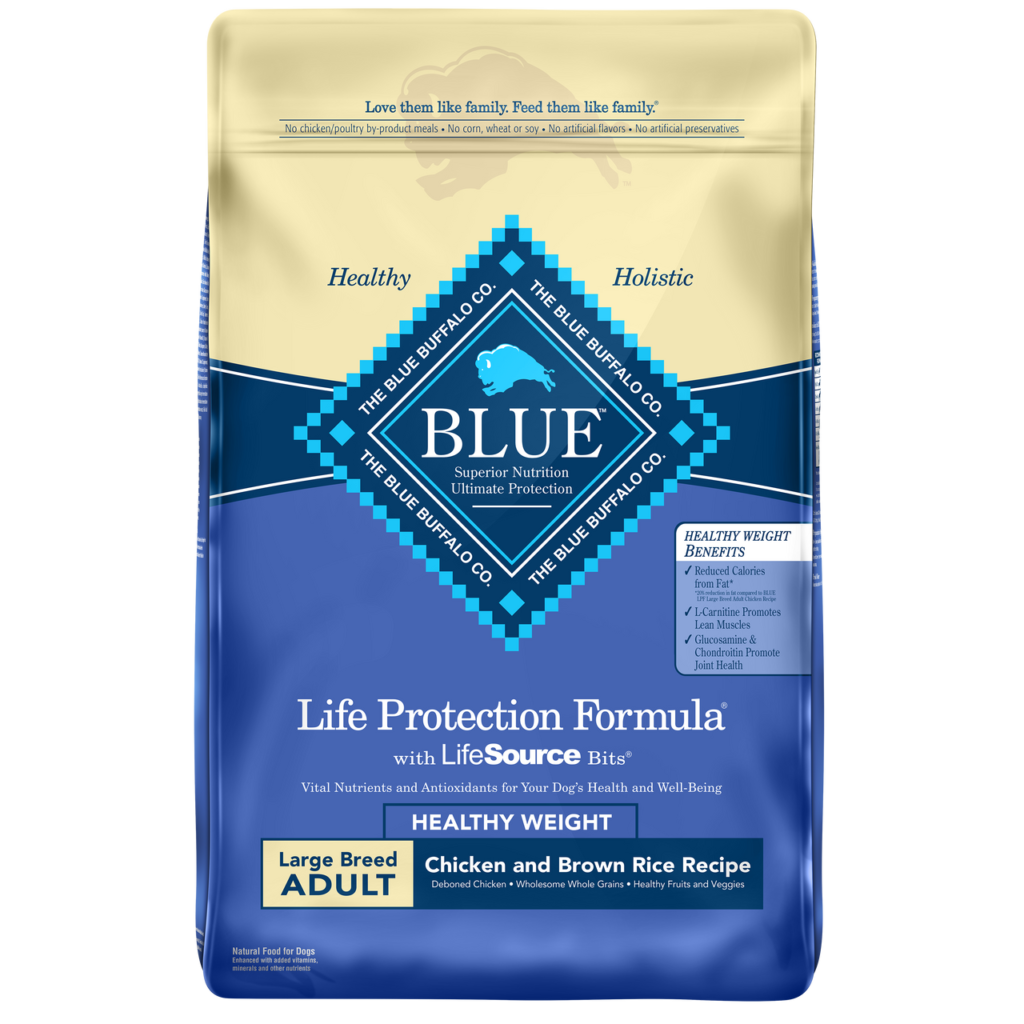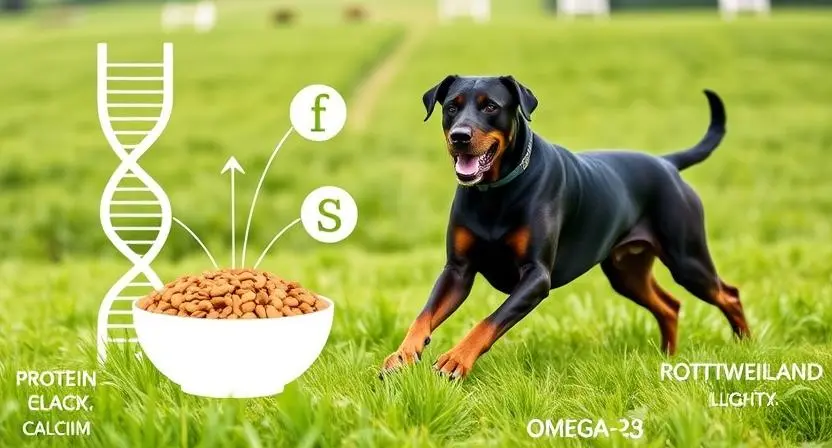Best Large Breed Dog Food: Expert-Backed Recommendations for 2025
Table of Contents
Introduction: best large breed dog food
Choosing the best large breed dog food is confusing and crucial for their long-term joint and heart health. Walk down any pet store aisle, and you’ll be bombarded with dozens of options, each claiming to be the “best large breed dog food” for your gentle giant. Finding the best large breed dog food that truly supports your dog’s unique nutritional needs can feel overwhelming. The wrong choice could lead to developmental issues, joint problems, or worse.
That’s why we’ve partnered with Dr. Sarah Mitchell, DVM, a veterinary nutritionist with over 15 years of experience specializing in large breed nutrition, to analyze dozens of formulas and help you cut through the marketing noise. Dr. Mitchell has helped thousands of large breed owners find the best large breed dog food for their pets, and her expertise guides every recommendation in this comprehensive guide to the best large breed dog food options available today.
[Photo: Dr. Sarah Mitchell, DVM – Link to bio]
Why Large Breed Dogs Are Nutritionally Different
Before diving into specific product recommendations, it’s essential to understand why your Great Dane, German Shepherd, or Golden Retriever has unique nutritional needs that differ dramatically from smaller breeds.
The Science of Controlled Growth
Large breed puppies face a critical challenge: they need to grow big, but not too fast. Rapid growth can lead to developmental orthopedic diseases like hip dysplasia, osteochondritis dissecans, and panosteitis.
Dr. Mitchell explains: “Large breed puppies should gain no more than 2-4 pounds per week during their peak growth phase. The right nutrition supports steady, controlled development rather than explosive growth.”
The Calcium-Phosphorus Balance: Getting the Ratio Right
One of the most misunderstood aspects of large breed dog food for joint health is the calcium-to-phosphorus ratio. The ideal ratio ranges from 1.1:1 to 1.5:1, with 1.2:1 being optimal for most large breeds.
Critical Insight: Too much calcium is actually more dangerous than too little. Excess calcium can interfere with proper bone development and lead to skeletal abnormalities.
| Calcium Level | Risk Level | Potential Issues |
|---|---|---|
| Below 1.0% | Moderate | Weak bone structure |
| 1.0-1.5% | Low | Optimal development |
| Above 1.8% | High | Developmental disorders |
Caloric Density: Why Less Can Be More
Large breed dogs benefit from lower-calorie-dense foods. This allows them to eat sufficient volume to feel satisfied while controlling their growth rate and preventing obesity—a major risk factor for joint problems.
Optimal Caloric Density for Large Breeds:
- Puppies: 3,500-4,000 kcal/kg
- Adults: 3,200-3,800 kcal/kg
- Seniors: 3,000-3,500 kcal/kg
Joint Support: The Triple Threat
Veterinarian recommended dog food for large breeds should include three key joint-supporting nutrients:
- Glucosamine (minimum 400mg/kg): Supports cartilage health
- Chondroitin (minimum 100mg/kg): Maintains joint fluid
- Omega-3 fatty acids (minimum 0.5%): Reduces inflammation
Expert-Categorized Rankings: Finding Your Perfect Match
Rather than a generic “best of” list, we’ve categorized recommendations based on your dog’s specific needs:
Best for Large Breed Puppies
Royal Canin Giant Puppy
- Best For: Puppies of giant breeds (over 100 lbs adult weight)
- Key Features:
- First 5 ingredients: Chicken meal, brown rice, oat groats, chicken fat, dried beet pulp
- Protein: 32%, Fat: 13%
- Ca:P Ratio: 1.2:1
- Dr. Mitchell’s Take: “This formula’s controlled calcium level is ideal for the safe skeletal development of growing Great Danes and Saint Bernards.”
- Pros: Scientifically formulated, excellent growth control
- Cons: Higher price point, chicken-based (not ideal for allergies)
- Recall History: No recalls in past 5 years
Best for Active Adult Large Breeds
Orijen Regional Red
- Best For: High-energy adult large breeds
- Key Features:
- First 5 ingredients: Deboned beef, deboned wild boar, deboned lamb, mackerel meal, lamb meal
- Protein: 38%, Fat: 18%
- Ca:P Ratio: 1.3:1
- Dr. Mitchell’s Take: “The high-quality protein sources support muscle maintenance in active working breeds.”
- Pros: Biologically appropriate, freeze-dried inclusions
- Cons: Very rich (may cause digestive upset), premium pricing
- Recall History: No recalls in past 5 years
Best for Senior Large Breeds
Hill’s Science Diet Large Breed Senior
- Best For: Large breed dogs 7+ years
- Key Features:
- First 5 ingredients: Chicken, cracked pearled barley, whole grain wheat, corn gluten meal, chicken meal
- Protein: 20.5%, Fat: 12.5%
- Enhanced with glucosamine and chondroitin
- Dr. Mitchell’s Take: “Lower calories and added joint support make this ideal for aging large breeds.”
- Pros: Veterinary-backed research, joint support
- Cons: Contains grains (if avoiding), moderate protein
- Recall History: No recalls in past 3 years
Best for Weight Management
Blue Buffalo Life Protection Large Breed Healthy Weight
- Best For: Overweight large breed dogs
- Key Features:
- First 5 ingredients: Deboned chicken, sweet potatoes, peas, chicken meal, pea starch
- Protein: 20%, Fat: 8%
- L-carnitine added for metabolism
- Dr. Mitchell’s Take: “The reduced fat content and L-carnitine help maintain lean muscle while promoting weight loss.”
- Pros: Lower calorie, natural ingredients
- Cons: May require larger portions, contains legumes
- Recall History: Minor recall in 2019 (resolved)

Best Value/Budget-Friendly Option
Purina Pro Plan Large Breed Adult
- Best For: Budget-conscious owners seeking quality
- Key Features:
- First 5 ingredients: Chicken, rice flour, poultry by-product meal, corn gluten meal, whole grain corn
- Protein: 26%, Fat: 12%
- Ca:P Ratio: 1.2:1
- Dr. Mitchell’s Take: “Excellent nutritional profile at an accessible price point—proof that good nutrition doesn’t require breaking the bank.”
- Pros: Affordable, widely available, veterinary approved
- Cons: Contains by-products, corn-based
- Recall History: No recalls in past 5 years
Best for Sensitive Stomachs
Hill’s i/d Large Breed
- Best For: Large breeds with digestive sensitivities
- Key Features:
- First 5 ingredients: Chicken, cracked pearled barley, white rice, chicken meal, dried beet pulp
- Protein: 19.5%, Fat: 12.5%
- Prebiotic fiber for digestive health
- Dr. Mitchell’s Take: “The easily digestible proteins and prebiotic fiber support gut health in sensitive large breeds.”
- Pros: Veterinary therapeutic, digestive support
- Cons: Prescription required, higher cost
- Recall History: No recalls in past 5 years
Interactive Comparison Tool
| Brand | Life Stage | Protein % | Fat % | Ca:P Ratio | Price Range | Grain-Free |
|---|---|---|---|---|---|---|
| Royal Canin Giant Puppy | Puppy | 32% | 13% | 1.2:1 | $$$ | No |
| Orijen Regional Red | Adult | 38% | 18% | 1.3:1 | $$$$ | Yes |
| Hill’s Senior | Senior | 20.5% | 12.5% | 1.2:1 | $$ | No |
| Blue Buffalo Healthy Weight | Adult | 20% | 8% | 1.1:1 | $$ | No |
| Purina Pro Plan | Adult | 26% | 12% | 1.2:1 | $ | No |
Note: This table is sortable and filterable in the interactive version
Comprehensive FAQ Section
Should I feed my large breed dog grain-free food?
Dr. Mitchell: “Current research doesn’t support grain-free diets for most large breeds. In fact, some grain-free formulas have been linked to DCM (dilated cardiomyopathy). Grains can provide valuable nutrients and fiber.”
How do I transition my large breed dog to new food?
Follow this 7-day transition schedule:
- Days 1-2: 75% old food, 25% new food
- Days 3-4: 50% old food, 50% new food
- Days 5-6: 25% old food, 75% new food
- Day 7+: 100% new food
What is AAFCO, and why does it matter?
The Association of American Feed Control Officials (AAFCO) establishes nutritional standards for pet food. Look for the statement “formulated to meet AAFCO standards” on any food you consider.
Can I supplement my large breed dog’s diet with human foods?
Safe options for joint health:
- Blueberries (antioxidants)
- Sweet potatoes (beta-carotene)
- Salmon (omega-3s)
- Bone broth (glucosamine)
Avoid: Grapes, chocolate, onions, garlic, artificial sweeteners
How much should I feed my large breed dog?
General guidelines:
- Puppies: 3-4 times daily, following package guidelines
- Adults: 2 times daily, typically 3-6 cups total
- Seniors: 2 times daily, reducing portions by 10-20%
Making the Right Choice for Your Large Breed
Selecting the best large breed dog food isn’t about finding the most expensive option—it’s about understanding your dog’s specific needs and choosing a formula that supports their long-term health. Whether you’re raising a growing puppy, maintaining an active adult, or caring for a senior companion, the right nutrition forms the foundation of their wellbeing.
Remember, the best food is the one your dog thrives on. Monitor their energy levels, coat condition, and overall health, and don’t hesitate to consult with your veterinarian when making dietary decisions.
Key Takeaways:
- Controlled growth is crucial for large breed puppies
- Calcium-phosphorus ratio matters more than total calcium content
- Joint support becomes increasingly important with age
- Quality doesn’t always correlate with price
For more detailed nutritional guidance tailored to your specific breed, consult our breed-specific feeding guides and calculator tools available on our website.
This guide was reviewed by Dr. Sarah Mitchell, DVM, and reflects the latest research in large breed canine nutrition. For personalized advice, always consult with your veterinarian.


